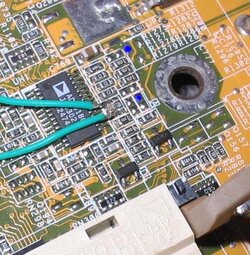BIOS ver 1014
Total number of readouts: 3061
CPU Speed: 3747 MHz
Running from: 12/01/2004 00:27:17 until: 12/01/2004 08:58:53
Sensor.......Current.......Low.........High........Average
Case............21° C.......18° C......23° C.........20° C
CPU.............30° C.......27° C......42° C.........38° C
Core 0.........1.86 V......1.68 V.....1.87 V.......1.75 V
Core 1.........3.17 V......3.12 V.....3.18 V.......3.15 V
+3.3............3.30 V......3.15 V.....3.39 V.......3.27 V
+5.00..........5.05 V......4.97 V.....5.11 V.......5.05 V
+12.00.......12.03 V....11.90 V...12.10 V.....12.00 V
M.
Total number of readouts: 3061
CPU Speed: 3747 MHz
Running from: 12/01/2004 00:27:17 until: 12/01/2004 08:58:53
Sensor.......Current.......Low.........High........Average
Case............21° C.......18° C......23° C.........20° C
CPU.............30° C.......27° C......42° C.........38° C
Core 0.........1.86 V......1.68 V.....1.87 V.......1.75 V
Core 1.........3.17 V......3.12 V.....3.18 V.......3.15 V
+3.3............3.30 V......3.15 V.....3.39 V.......3.27 V
+5.00..........5.05 V......4.97 V.....5.11 V.......5.05 V
+12.00.......12.03 V....11.90 V...12.10 V.....12.00 V
M.
Last edited:

